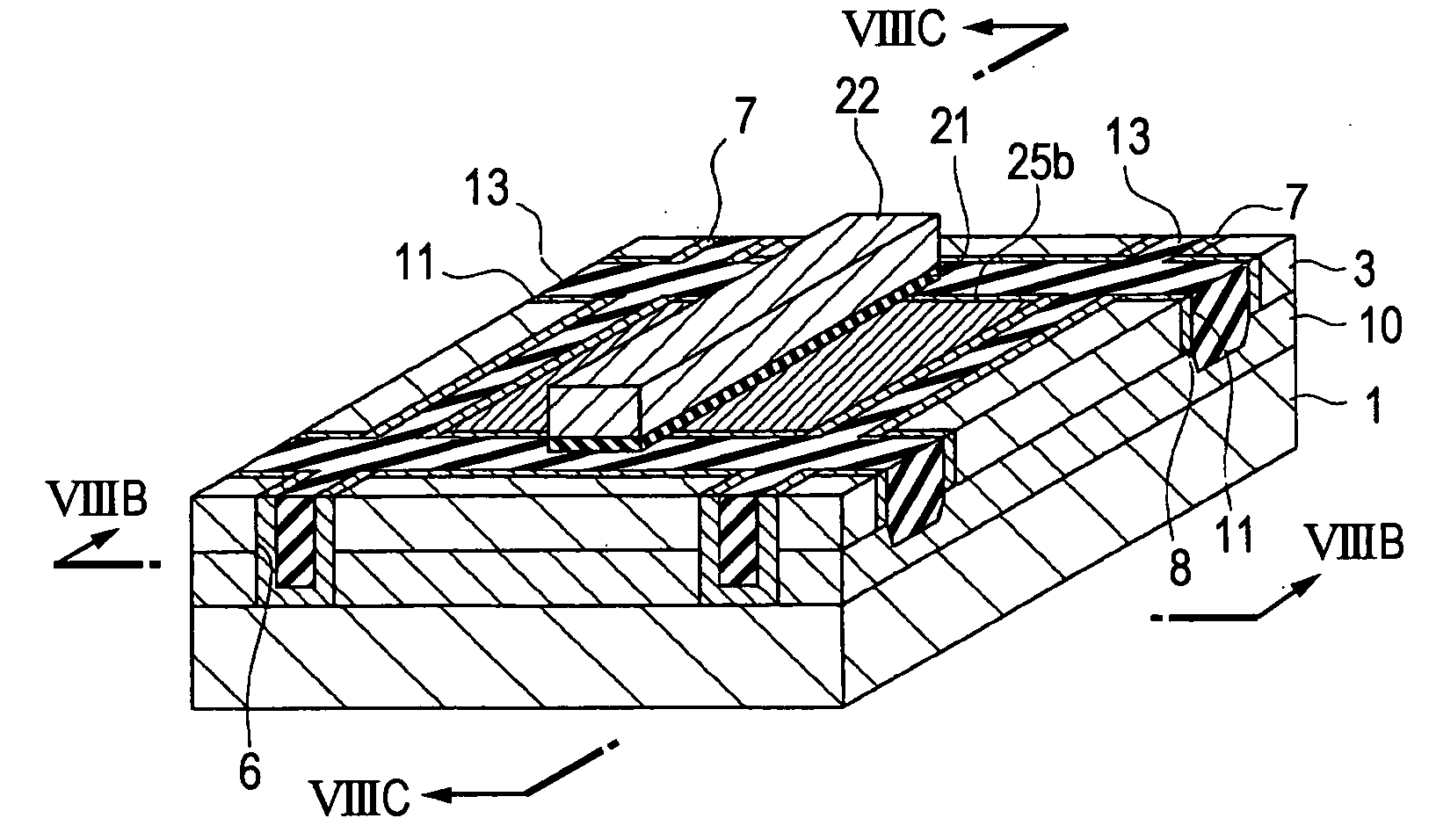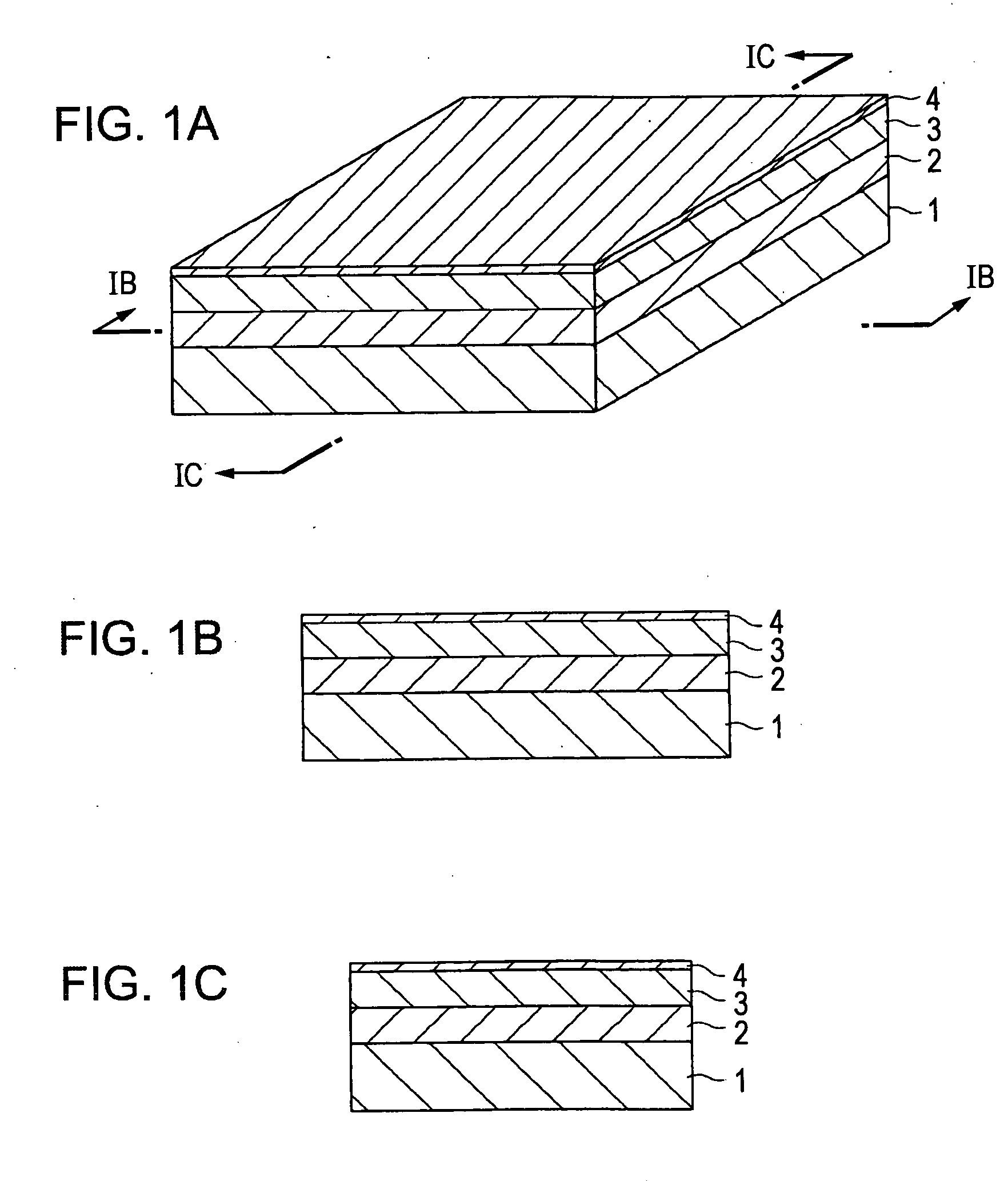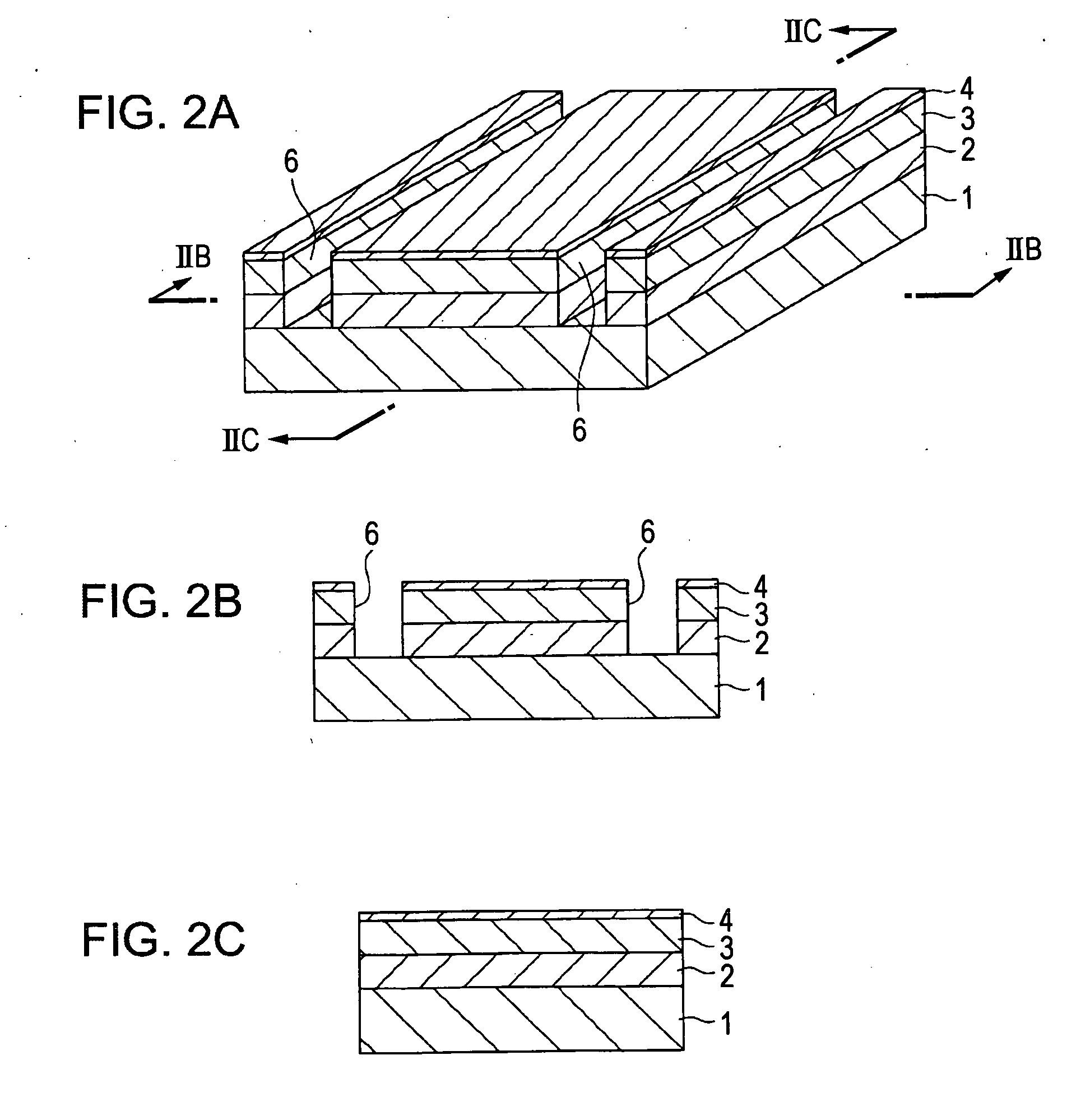Method of manufacturing semiconductor substrate and method of manufacturing semiconductor device
a manufacturing method and semiconductor technology, applied in the direction of semiconductor devices, basic electric elements, electrical appliances, etc., can solve the problems of difficult to stabilize the characteristics the thickness of the soi layer is large, and the cost of soi transistors is higher than that of field effect transistors formed, etc., to achieve the effect of reducing the restriction on the area of the semiconductor layer, reducing the cost and improving the etching rate ratio
- Summary
- Abstract
- Description
- Claims
- Application Information
AI Technical Summary
Benefits of technology
Problems solved by technology
Method used
Image
Examples
Embodiment Construction
[0037] A method of manufacturing a semiconductor device according to exemplary embodiments of the present invention will be described with reference to the drawings.
[0038]FIGS. 1A to 8A are perspective views illustrating a method of manufacturing a semiconductor device according to an embodiment of the invention, FIGS. 1B to 8B are cross-sectional views taken along Lines A1-A1′ to A8-AB′ of FIGS. 1A to 8A, respectively, and FIGS. 1C to 8C are cross-sectional views taken along Lines B1-B1′ to B8-B8′ of FIGS. 1A to 8A, respectively.
[0039] Referring to FIG. 1, a γ-aluminum oxide layer ( γ-Al2O3 layer) 2 is formed on a semiconductor substrate 1 by the use of epitaxial growth and a semiconductor layer 3 is formed on the γ-aluminum oxide layer 2 by the use of epitaxial growth. The semiconductor substrate 1 and the semiconductor layer 3 may be formed of, for example, Si, Ge, SiGe, SiC, SiSn, PbS, GaAs, InP, GaP, GaN, ZnSe, or the like. Specifically, when the semiconductor substrate 1 is ...
PUM
| Property | Measurement | Unit |
|---|---|---|
| capacitance | aaaaa | aaaaa |
| speed | aaaaa | aaaaa |
| concentration | aaaaa | aaaaa |
Abstract
Description
Claims
Application Information
 Login to View More
Login to View More - R&D Engineer
- R&D Manager
- IP Professional
- Industry Leading Data Capabilities
- Powerful AI technology
- Patent DNA Extraction
Browse by: Latest US Patents, China's latest patents, Technical Efficacy Thesaurus, Application Domain, Technology Topic, Popular Technical Reports.
© 2024 PatSnap. All rights reserved.Legal|Privacy policy|Modern Slavery Act Transparency Statement|Sitemap|About US| Contact US: help@patsnap.com










